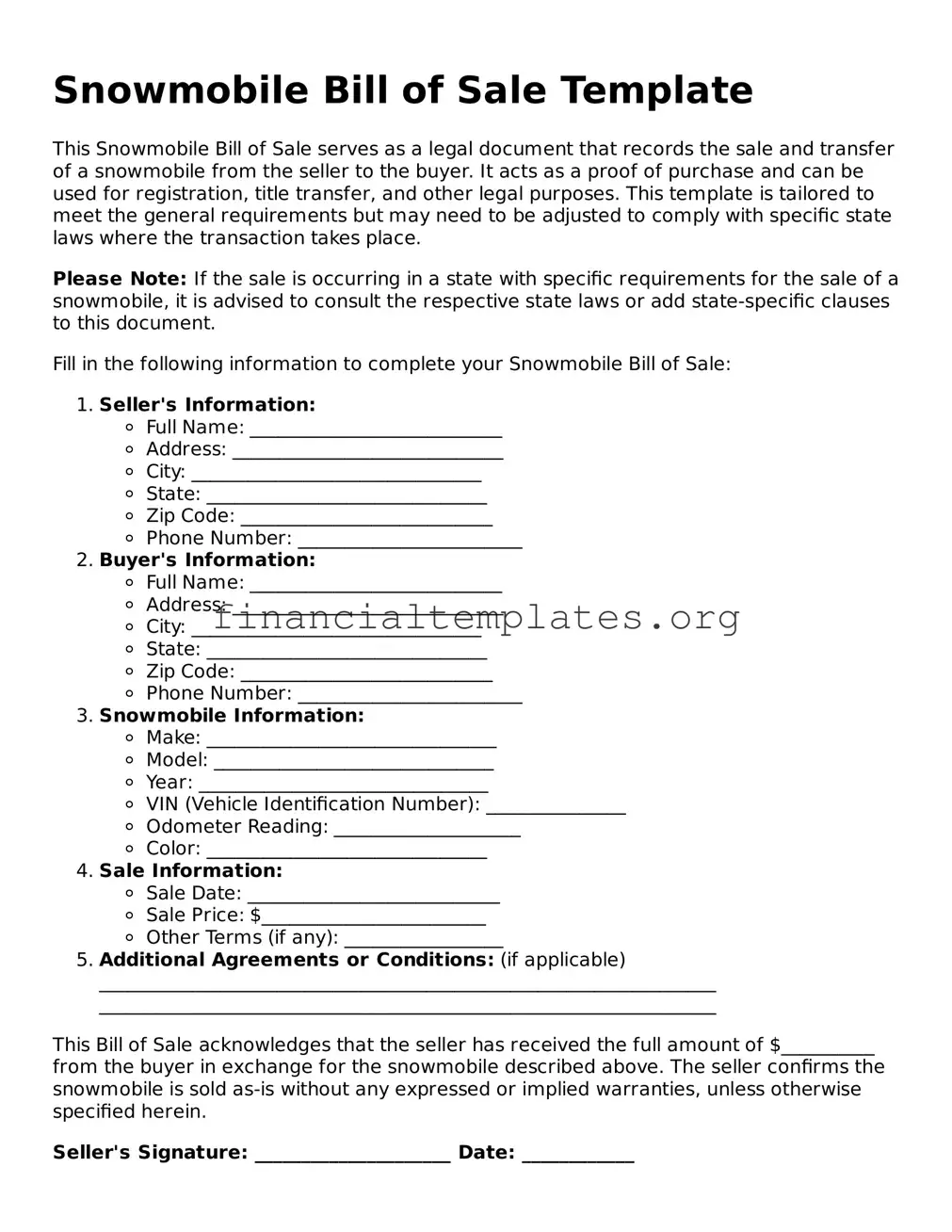Snowmobile Bill of Sale Template
This Snowmobile Bill of Sale serves as a legal document that records the sale and transfer of a snowmobile from the seller to the buyer. It acts as a proof of purchase and can be used for registration, title transfer, and other legal purposes. This template is tailored to meet the general requirements but may need to be adjusted to comply with specific state laws where the transaction takes place.
Please Note: If the sale is occurring in a state with specific requirements for the sale of a snowmobile, it is advised to consult the respective state laws or add state-specific clauses to this document.
Fill in the following information to complete your Snowmobile Bill of Sale:
- Seller's Information:
- Full Name: ___________________________
- Address: _____________________________
- City: _______________________________
- State: ______________________________
- Zip Code: ___________________________
- Phone Number: ________________________
- Buyer's Information:
- Full Name: ___________________________
- Address: _____________________________
- City: _______________________________
- State: ______________________________
- Zip Code: ___________________________
- Phone Number: ________________________
- Snowmobile Information:
- Make: _______________________________
- Model: ______________________________
- Year: _______________________________
- VIN (Vehicle Identification Number): _______________
- Odometer Reading: ____________________
- Color: ______________________________
- Sale Information:
- Sale Date: ___________________________
- Sale Price: $________________________
- Other Terms (if any): _________________
- Additional Agreements or Conditions: (if applicable)
__________________________________________________________________
__________________________________________________________________
This Bill of Sale acknowledges that the seller has received the full amount of $__________ from the buyer in exchange for the snowmobile described above. The seller confirms the snowmobile is sold as-is without any expressed or implied warranties, unless otherwise specified herein.
Seller's Signature: _____________________ Date: ____________
Buyer's Signature: _____________________ Date: ____________
This document is executed in good faith and hereby is acknowledged by both parties to be the finalized agreement related to the sale of the snowmobile. Both the buyer and seller agree to abide by the terms set forth in this Bill of Sale.
